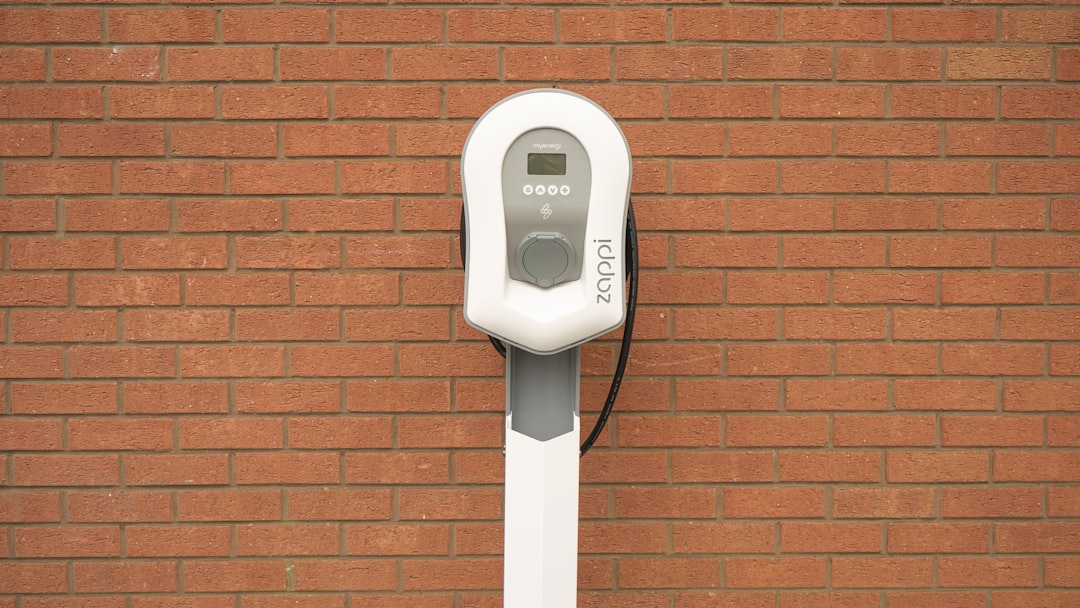As electric vehicles (EVs) continue to gain traction in the automotive market, the infrastructure supporting them, particularly EV charging stations, has become increasingly vital. These stations serve as the lifeblood of the electric vehicle ecosystem, providing the necessary energy to keep your vehicle running smoothly. With the growing number of EVs on the road, the demand for reliable and efficient charging solutions has never been higher.
You may find yourself relying on these stations not just for convenience but also for the assurance that your vehicle will be ready when you need it. The landscape of EV charging is diverse, encompassing various types of charging stations, from home chargers to public fast-charging networks. Each type serves a unique purpose and caters to different user needs.
This article delves into the importance of analyzing failure rates associated with these stations, exploring the factors that contribute to their reliability and the implications for EV adoption.
Key Takeaways
- EV charging stations are crucial for the widespread adoption of electric vehicles.
- Analyzing failure rates is important for understanding the reliability of EV charging stations.
- Factors such as weather, usage patterns, and equipment quality can affect EV charging station failure.
- Common types of EV charging station failures include power supply issues and connector problems.
- Methods for collecting failure rate data include on-site inspections and remote monitoring.
Importance of Analyzing Failure Rates
Analyzing failure rates of EV charging stations is crucial for several reasons. First and foremost, it directly impacts user experience. When you approach a charging station, you expect it to function seamlessly, allowing you to recharge your vehicle without hassle.
If a station fails, it can lead to frustration and inconvenience, potentially deterring you from using electric vehicles altogether. Understanding failure rates helps stakeholders identify problem areas and implement solutions that enhance user satisfaction. Moreover, analyzing failure rates is essential for the growth of the EV market.
As more consumers consider transitioning to electric vehicles, they need assurance that charging infrastructure is reliable. High failure rates can create skepticism about the viability of EVs as a practical alternative to traditional gasoline-powered cars. By addressing these issues through thorough analysis, stakeholders can foster confidence in electric mobility, encouraging more individuals to make the switch.
Factors Affecting EV Charging Station Failure

Several factors contribute to the failure rates of EV charging stations, and understanding these can help you appreciate the complexities involved in maintaining a reliable network. One significant factor is the technology used in charging stations. Different manufacturers employ various components and software systems, which can lead to inconsistencies in performance.
If you encounter a station that uses outdated technology or poorly designed components, it may be more prone to failure. Environmental conditions also play a critical role in the reliability of charging stations. For instance, extreme weather conditions such as heavy rain, snow, or extreme heat can affect the performance of charging equipment.
If you live in an area with harsh weather, you may notice that some stations are more susceptible to outages during certain seasons. Additionally, the location of charging stations can impact their usage patterns and maintenance needs. Stations situated in high-traffic areas may experience more wear and tear than those in less frequented locations.
Common Types of EV Charging Station Failures
| Failure Type | Percentage |
|---|---|
| Connector Fault | 35% |
| Power Supply Issues | 25% |
| Communication Errors | 20% |
| Software Malfunction | 15% |
| Hardware Failure | 5% |
When it comes to EV charging station failures, several common issues tend to arise. One prevalent type is hardware failure, which can manifest as malfunctioning connectors or damaged cables. If you’ve ever approached a station only to find that the connector is broken or doesn’t fit your vehicle properly, you know how frustrating this can be.
Hardware failures can often be attributed to wear and tear over time or inadequate maintenance practices. Another common failure type is software-related issues. Many modern charging stations rely on complex software systems for operation and user interaction.
If there are bugs or glitches in the software, it can lead to communication failures between the station and your vehicle or even prevent you from initiating a charge altogether. These software issues can be particularly challenging to diagnose and resolve, as they often require specialized knowledge and tools.
Methods for Collecting Failure Rate Data
To effectively analyze failure rates of EV charging stations, it’s essential to employ robust data collection methods. One approach is through direct monitoring of charging station performance. This can involve tracking usage patterns, downtime incidents, and user-reported issues over time.
Another method involves leveraging user feedback through surveys and mobile applications. As an EV owner, your experiences and insights are invaluable in understanding how well charging stations perform in real-world conditions.
By sharing your feedback on station reliability and any issues encountered, you contribute to a larger dataset that can inform improvements across the network. Combining direct monitoring with user feedback creates a comprehensive picture of charging station performance.
Analyzing Failure Rates: Case Studies

Examining case studies of specific EV charging networks can provide valuable insights into failure rates and their implications. For instance, consider a city that implemented a network of fast-charging stations to support its growing EV population. By analyzing data from these stations over time, city planners discovered that certain locations experienced higher failure rates due to environmental factors like flooding or extreme temperatures.
In another case study involving a private charging network, operators found that software-related failures were more common than anticipated. By investing in regular software updates and maintenance protocols, they were able to significantly reduce downtime and improve user satisfaction. These case studies highlight the importance of continuous analysis and adaptation in addressing failure rates effectively.
Impact of Failure Rates on EV Adoption
The impact of failure rates on EV adoption cannot be overstated. When potential buyers consider making the switch to electric vehicles, they often weigh the reliability of charging infrastructure heavily in their decision-making process. If they perceive that charging stations frequently fail or are unreliable, they may hesitate to invest in an EV.
This skepticism can hinder overall market growth and slow down the transition toward sustainable transportation. Conversely, when stakeholders actively work to reduce failure rates and improve station reliability, it fosters confidence among consumers. As you consider purchasing an electric vehicle, knowing that there is a dependable network of charging stations available can significantly influence your decision.
A robust infrastructure not only enhances user experience but also contributes to a positive perception of electric mobility as a whole.
Strategies for Improving EV Charging Station Reliability
To enhance the reliability of EV charging stations, several strategies can be implemented by stakeholders across the industry. One effective approach is investing in high-quality components and technology from reputable manufacturers. By prioritizing quality over cost-cutting measures, operators can reduce the likelihood of hardware failures and ensure that their stations perform optimally.
Regular maintenance is another critical strategy for improving reliability. Establishing routine inspections and maintenance schedules can help identify potential issues before they escalate into significant problems. As an EV owner, you may also benefit from being informed about maintenance practices at your local charging stations; knowing that they are well-maintained can give you peace of mind when using them.
The Role of Maintenance in Reducing Failure Rates
Maintenance plays a pivotal role in reducing failure rates at EV charging stations. Just like any other piece of equipment, charging stations require regular upkeep to function effectively over time. This includes not only physical inspections but also software updates and troubleshooting procedures to address any emerging issues promptly.
As an EV user, you may not always see the behind-the-scenes work that goes into maintaining these stations; however, it directly impacts your experience as a driver. When maintenance is prioritized, it leads to fewer outages and improved performance overall. Stakeholders must recognize that investing in maintenance is not just an operational cost but a necessary step toward ensuring long-term reliability and user satisfaction.
Future Trends in EV Charging Station Reliability
Looking ahead, several trends are likely to shape the future of EV charging station reliability. One promising development is the integration of advanced monitoring technologies powered by artificial intelligence (AI) and machine learning (ML). These technologies can analyze real-time data from charging stations to predict potential failures before they occur, allowing for proactive maintenance measures.
Additionally, as battery technology continues to evolve, we may see improvements in charging speeds and efficiency at stations. This could lead to reduced wear on equipment and lower failure rates overall. As an EV owner, staying informed about these advancements will help you understand how they may enhance your experience with charging infrastructure in the coming years.
Conclusion and Recommendations for Addressing Failure Rates
In conclusion, addressing failure rates at EV charging stations is essential for fostering confidence in electric mobility and supporting widespread adoption of electric vehicles. By understanding the factors contributing to failures and implementing effective strategies for improvement, stakeholders can create a more reliable network for users like yourself. Recommendations include investing in high-quality technology, prioritizing regular maintenance practices, and leveraging data collection methods for continuous analysis.
As you navigate the world of electric vehicles, remember that your experiences matter; sharing feedback on charging station performance can contribute to ongoing improvements in this vital infrastructure. Together, we can work toward a future where reliable EV charging is not just an aspiration but a reality for all drivers.
Recent discussions around electric vehicle (EV) charging station failure rates have highlighted the importance of reliable infrastructure as the adoption of EVs continues to rise. A related article that delves into the economic implications of such failures can be found at
